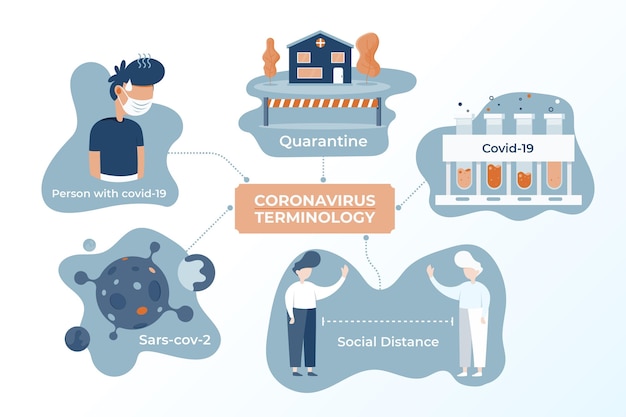
If you start developing symptoms of COVID-19, it’s important to take steps to manage your condition and reduce the chance of spreading the virus to others. Since COVID-19 is highly contagious, proper care and precautions are essential.
If you experience common symptoms like fever, cough, or trouble breathing, you should follow guidelines provided by health authorities, like the CDC. In most cases, COVID-19 symptoms remain mild, such as low-grade fever or a slight cough, and can improve on their own with self-isolation and monitoring. However, if your symptoms worsen, such as difficulty breathing or chest pain, seek medical care immediately as hospitalization could be needed.
Certain individuals, such as those with underlying conditions like heart disease, diabetes, high blood pressure, or respiratory issues, may have a higher risk of severe symptoms. Similarly, those living in areas where illnesses like malaria or dengue fever occur may also face higher risks.
### Steps to Take If You Think You Have COVID-19:
**1. Stay Home and Contact Your Doctor**
Most people with mild symptoms recover at home. Avoid leaving your house unless it’s to seek medical care, and do not visit public places. Rest, hydrate by drinking plenty of water, and consider taking over-the-counter medications like acetaminophen for symptom relief.
Follow local health guidelines for the duration of isolation, and avoid public transportation even if you have a medical appointment. For severe symptoms, call ahead to your healthcare provider before visiting their office to ensure they’re prepared to care for you safely.
**2. Assess Your Risk Factors**
If you’re concerned about your symptoms, contact your nearest healthcare facility. They’ll likely ask you questions about your symptoms, recent travel, and possible exposure to someone with COVID-19. Be honest and thorough when answering to help them determine the next steps.
**3. Follow Your Doctor’s Instructions**
After contacting your healthcare provider, they’ll guide you on what to do next. You may be asked to monitor your symptoms, continue isolating at home, or visit a medical facility if further evaluation is needed. If visiting a clinic or test center, go alone if possible and avoid exposing others unnecessarily.
For severe symptoms like extreme breathing difficulties or chest pressure, don’t hesitate to call for immediate medical attention.
**4. Clean and Disinfect Surfaces Daily**
COVID-19 can survive on surfaces for some time, so it’s important to disinfect high-touch areas in your home daily. This includes doorknobs, counters, keyboards, phones, remote controls, and bathroom fixtures.
If someone else is helping clean spaces used by a sick individual, they should wear masks and gloves and delay cleaning as long as possible after the sick person has used the space. Dirty areas should be cleaned first with soap or detergent and then sanitized with disinfectants. Always follow product instructions for safe use, ensuring surfaces stay wet for the recommended time to properly kill germs.
**5. Practice Good Hand Hygiene**
Wash your hands frequently with soap and water for at least 20 seconds, especially after sneezing, coughing, or using the bathroom, and before eating or preparing food. If soap isn’t available, use a hand sanitizer with at least 60% alcohol. Avoid touching your face with unwashed hands.
Don’t share household items like dishes, towels, or bedding with others. These should only be used by you and cleaned thoroughly before reuse.
**6. Follow Proper Respiratory Etiquette**
To prevent spreading droplets, cover your mouth and nose when coughing or sneezing. Use the bend of your elbow or a tissue that can be disposed of immediately. Wash your hands immediately after coughing or sneezing.
If you’re isolating in a care facility or around others, wear a mask to protect those nearby.
**7. Avoid Public Transport and Shared Spaces**
Stay in one room as much as possible, use a separate bathroom if available, and limit interaction with others, including pets. When around people, always wear a mask to minimize the risk of spreading the virus.
**8. Wear Protective Clothing**
When leaving isolation is necessary, wear long-sleeved, fully covered clothing and a mask to minimize spreading the infection. Masks should also be used when in close contact with others, but they are not suitable for children under two or individuals with breathing difficulties. Medical-grade masks should be reserved for healthcare workers.
### Stay Calm and Don’t Panic
Although it’s normal to feel anxious about contracting COVID-19, keeping calm is vital. Healthcare professionals are working tirelessly to provide care and develop effective treatments and preventative measures.
Panic won’t help—it’s more productive to focus on following the steps above and staying informed. If you feel unwell or suspect you’ve been exposed, following these guidelines will not only help you recover but also prevent the spread of the virus to others.
For severe symptoms like extreme trouble breathing or chest pain, contact medical services immediately. Swift action can save lives.